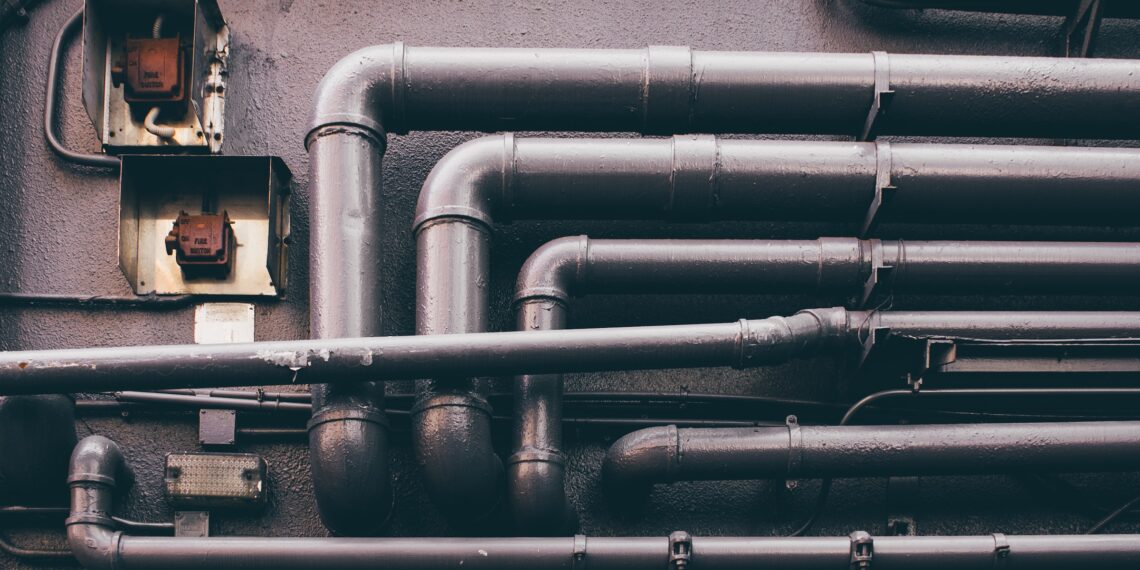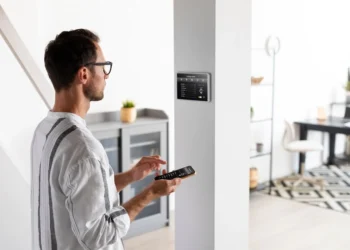Homes and businesses in flood-prone areas rely on sump pumps. But if a pump fails, especially during heavy rainfall or flooding, the consequences can be devastating. To protect yourself, consider implementing backup systems for sump pumps.
Battery-Powered vs. Water-Powered
Backup systems for sump pumps come in various forms, each designed to address specific needs and challenges. One popular option is battery-powered systems, which activate when the main pump fails due to power outages or mechanical problems. Equipped with their own independent batteries, they spring into action to pump water out of the sump pit if the main system goes offline.
Water-powered backup systems for sump pumps are also popular. This type of pump relies on your home’s water supply pressure to expel water from the sump pit. This is an ideal choice for those concerned about the longevity of battery life. However, its efficiency is contingent on a consistent municipal water source.
High-water alarms can work with either backup system. They alert homeowners when water levels in the sump basin become excessively high. Modern versions of these alarms can even integrate with smart home systems or send alerts directly to your phone.
Backup Power
For homes situated in areas that frequently experience power outages, having a home generator is a wise investment. In the event of power disruption, the generator will kick in, ensuring your main sump pump continues to operate.
Some homeowners prefer installing two main sump pumps for redundancy. This offers an additional layer of protection, especially during heavy rain, ensuring that if one pump fails, the other continues the task.
Exploring alternative power sources, such as adding a solar charger for the backup battery or pairing a generator with a battery backup, is part of creating backup systems for sump pumps. As technology advances, there’s also the option to upgrade to a newer and more potent sump pump, ensuring it doesn’t strain during high-demand periods.
Whatever backup system you choose to go with, regular maintenance and inspections are required. It’s essential to periodically assess the condition of both the main and backup pumps, clean the sump pit and look out for signs of wear and tear. Regularly testing the functionality by pouring water into the sump pit helps ensure efficient performance.
Finding the Right Contractor
Once you’ve decided to invest in backup systems for sump pumps, selecting the right contractor is the next essential step. Discuss several key points with potential contractors to ensure you make informed decisions and get the most value.
Qualifications
Find out the contractor’s experience level with sump pumps. How long have they been working with them? Inquire about any professional certifications or affiliations they might hold. Their qualifications can provide insight into their expertise and credibility in the field.
Request references or testimonials from prior clients. Additionally, ask if they’ve handled houses or situations similar to yours.
Assessment and Installation
Before making any decisions, request a thorough evaluation of your existing sump pump system. This assessment will help both you and the contractor determine if your current system requires any urgent repairs or improvements.
When it comes to installation, know the expected life span of the recommended sump pump. Clarify the warranty terms and understand its coverage and duration. Also, find out how long the installation process will take. If you’re thinking of replacing your old pump, find out if the contractor offers this service and if there’s an add-on charge.
Know the suggested inspection or service frequency for your sump pump. If possible, request a maintenance timeline or guide. It’s essential to be aware of signs that indicate a malfunctioning sump pump, so ensure you ask the contractor about this.
With technological advancements, there might be additional features or upgrades, like alarms or sensors, available. Discuss these possibilities with the contractor and understand how these add-ons can benefit your system.
Backup Systems and Emergencies
Decide whether a battery or water-powered backup system is optimal for your residence. Also, gather information on how often you should service or replace these backup batteries to ensure system longevity. Choose a contractor who offers emergency services in case your pump malfunctions or floods.
Cost
Get a transparent quote for the service and ensure you inquire about any hidden charges. Explore all available financing options and payment plans and inquire about any special discounts they might offer, such as for military service members or those paying upfront in cash.
Local Regulations and Aftersales Service
Given the variability of local weather conditions and water table levels, knowing how often your sump pump should run is important. Also, familiarize yourself with any local regulations or codes concerning sump pumps.
Lastly, establish clear communication channels for any future questions or concerns. Determine the best way to reach out to the contractor. Find out if they offer yearly service contracts or membership programs that might benefit you in the long run.
Invest in Your Peace of Mind
A combination of regular upkeep, reliable backups and alarms offers the best protection against sump pump breakdowns. This investment can save you on repair costs and offer peace of mind during heavy rainfall.
Before committing to the investment, make sure you understand your sump pump’s needs, gauge the professional’s expertise and know the actions required to ensure a dry and safe basement or crawlspace.









